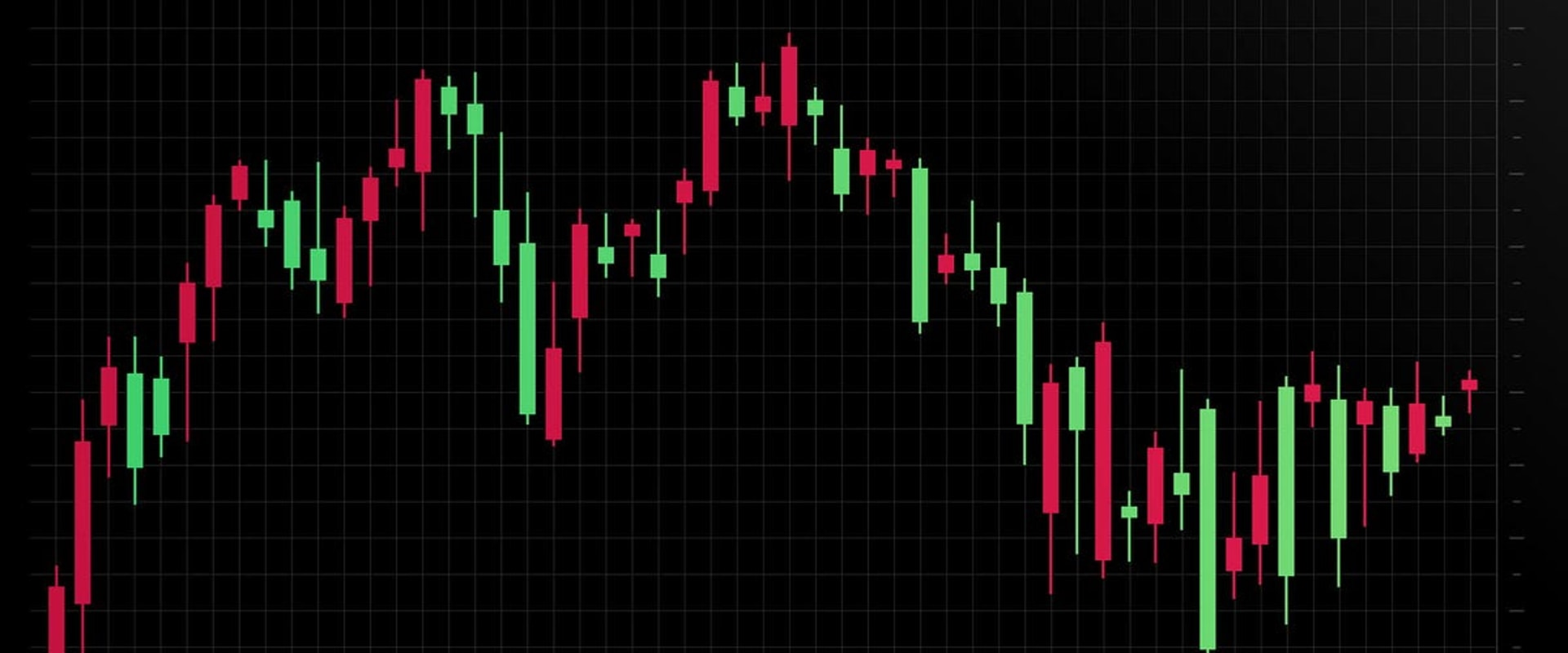Are you looking for an effective trading strategy? Look no further than the Bollinger Band Strategy! This comprehensive overview will show you how to get the most out of this simple yet powerful range bound trading strategy. Bollinger Bands are a type of technical indicator used to measure price volatility and identify potential entry and exit points for a currency pair.
This strategy uses the combination of a price chart and the Bollinger Bands indicator to help traders predict market movements and take advantage of market conditions. Whether you're just starting out in Forex trading or you're an experienced trader looking for a new strategy, the Bollinger Band Strategy can be an incredibly helpful tool in your trading arsenal. In this article, we'll explain what Bollinger Bands are, how they work, and provide a comprehensive overview of the Bollinger Band Strategy so you can get the most out of this powerful trading tool. Bollinger Bands are a popular trading strategy used by experienced traders to identify trends and maximize profits. This comprehensive guide explains the basics of Bollinger Bands, how to use them in your trading, and how to identify trends and maximize profits with this strategy. Bollinger Bands are a technical indicator that consists of three bands: an upper band, a lower band, and a middle band. The upper and lower bands are two standard deviations away from the middle band and are used to identify trend reversals.
The width of the bands is determined by the volatility of the market. When the market is volatile, the bands widen; when the market is stable, the bands narrow. The indicators used in Bollinger Bands include the upper and lower bands, the midline, and the width of the bands. The upper and lower bands are used to identify trend reversals by showing points of support or resistance. The midline is used to identify a security’s average price over a period of time.
The width of the bands can be used to gauge the strength of a trend. If the bands are wide, the trend is strong; if they are narrow, the trend is weak. Bollinger Bands can be used to identify trends and make decisions about when to enter and exit trades. By watching for points of support or resistance at the upper or lower bands, traders can identify potential reversals in trends. Additionally, traders can use the width of the bands to gauge the strength of a trend.
If a security’s price is consistently at or near one of the outer bands, this may indicate that it is overbought or oversold, which could be an indication for a reversal. There are many examples of how Bollinger Bands have been successfully used in different market conditions. For example, in an uptrending market, traders could watch for price action near one of the outer bands as an indication for a potential reversal. Similarly, in a downtrending market, traders could watch for price action near one of the outer bands as an indication for a potential reversal. The advantages of using Bollinger Bands in trading include being able to identify trends and maximize profits. This strategy is beneficial for traders who want to maximize their profits and minimize their losses.
Additionally, it can be used to find areas of overbought or oversold conditions which could be an indication for potential reversals in price. The potential pitfalls associated with using Bollinger Bands include incorrect interpretation of price movements. If a trader incorrectly interprets price movements near one of the outer bands as an indication for a potential reversal when there is none, this could result in losses. Additionally, this strategy may not work in all markets or all conditions. There are several variations of Bollinger Band strategies that are available. Simple moving average (SMA) uses only one set of data points to calculate an average price over time.
Exponential moving average (EMA) uses more recent data points more heavily when calculating averages. Weighted moving average (WMA) uses weights to give more importance to recent data points when calculating averages. Each variation has its own strengths and weaknesses and should be used depending on market conditions. To apply the Bollinger Band strategy in practice, traders must first set up the indicators on their charting software. This involves selecting the type of moving average (SMA, EMA, WMA) and setting up the upper and lower bands two standard deviations away from the midline.
Once these indicators have been set up, traders can start watching for price action near one of the outer bands as an indication for a potential reversal. When entering trades with this strategy, traders should look for entries near one of the outer bands as an indication for a potential reversal. Traders should also take into account other factors such as volume and momentum when deciding whether or not to enter trades based on Bollinger Band signals. When exiting trades with this strategy, traders should look for exits near one of the outer bands as an indication for a potential reversal. There are some risks associated with using Bollinger Bands in trading. These include incorrect interpretation of price movements near one of the outer bands and false signals that may result in losses.
Additionally, this strategy may not work in all markets or all conditions. Therefore, it is important for traders to be aware of these risks and manage them accordingly. Bollinger Bands are a popular trading strategy used by experienced traders to identify trends and maximize profits. This comprehensive guide explains the basics of Bollinger Bands, how to use them in your trading, and how to identify trends and maximize profits with this strategy.
What are Bollinger Bands? Bollinger Bands are a technical analysis tool that uses three bands – an upper band, lower band, and midline – to identify trends in the market.
The upper band is calculated by adding a multiple of the standard deviation of closing prices to a simple moving average (SMA) of closing prices. The lower band is calculated by subtracting the same multiple from the SMA. The midline is simply the SMA of closing prices. The width of the bands is determined by the volatility of the market and the multiple used in the calculation.
How Bollinger Bands are Used in Trading Bollinger Bands can be used to identify trends in the market. When the price of an asset moves outside the upper or lower band, it can indicate a potential trend reversal. Traders can use this information to make decisions about when to enter and exit trades. Traders can also use the width of the bands to determine whether the market is trending or ranging.
If the bands are wide, it may indicate that the market is trending, while if the bands are narrow, it may indicate that the market is range-bound.
Examples of Bollinger Band Strategy Success The Bollinger Band strategy has been successfully used in different market conditions. For example, when the price moves outside of an upper or lower band, it may indicate a potential trend reversal. Traders can use this information to enter or exit trades accordingly. Additionally, when the width of the bands is wide, it may indicate that the market is trending and traders can take advantage of this by entering long or short positions accordingly.
Advantages and Disadvantages of Bollinger Bands There are several advantages to using Bollinger Bands in trading. One advantage is that they can help traders identify trends in the market and make decisions about when to enter and exit trades. Additionally, they can help traders maximize profits and minimize losses by allowing them to take advantage of potential trend reversals. However, there are also some potential pitfalls that come with using Bollinger Bands.
For example, it is important for traders to understand how to interpret the signals generated by these indicators correctly so they don't make costly mistakes.
Variations of Bollinger Band Strategy There are several variations of the Bollinger Band strategy that traders can use depending on their trading style and objectives. These variations include simple moving average (SMA), exponential moving average (EMA), weighted moving average (WMA), and others. Each variation has its own advantages and disadvantages so it is important for traders to understand when each should be used in order to maximize their profits and minimize their losses.
Applying Bollinger Band Strategy in Practice Applying the Bollinger Band strategy in practice requires setting up indicators, entering trades, and exiting trades according to signals generated by these indicators. Setting up these indicators involves selecting an SMA, a multiple for calculating upper and lower bands, and a time period for calculating these values.
Traders should then enter trades when price moves outside of an upper or lower band and exit trades when price moves back inside these bands. This strategy can be beneficial for traders who want to maximize their profits and minimize their losses
.
Risks Associated with Using Bollinger Bands
While there are several advantages to using Bollinger Bands in trading, there are also some potential risks associated with this strategy. For example, if traders incorrectly interpret signals generated by these indicators, they may make costly mistakes. Additionally, if traders do not understand how to set up these indicators correctly, they may not get accurate signals about when to enter or exit trades.It is important for traders to be aware of these risks so they can manage them properly.
What Are Some Limitations of Using Bollinger Bands?
Bollinger Bands are a popular trading strategy used by experienced traders to identify trends and maximize profits. However, there are some limitations to using this strategy, such as false signals, lag time, and overtrading.False Signals: Bollinger Bands can give off false signals when the market is in a sideways trend. This is because the bands are designed to identify trends, not sideways movements. As a result, the bands may give off false signals that can lead to losses.
Lag Time: Bollinger Bands may also give off signals with a lag time.
This means that by the time a signal is generated, the market may have already moved in a different direction. This can cause traders to miss out on potential profits.
Overtrading: Finally, traders may be tempted to overtrade when using Bollinger Bands. This is because the bands can give off many signals in a short period of time. As a result, traders may be tempted to take too many trades, which can lead to significant losses.
What Are the Benefits of Using Bollinger Bands?
Bollinger Bands offer a number of benefits to traders, including increased accuracy in identifying trends, improved risk management, and better profits.The bands are a valuable tool that can help traders get ahead of the competition and maximize their profits. The most notable benefit of using Bollinger Bands is increased accuracy in identifying trends. By plotting multiple sets of data points on a chart, Bollinger Bands can quickly and easily identify trends that would otherwise be difficult to spot. This can help traders make more informed decisions and increase their chances of success. Bollinger Bands also provide improved risk management. The bands are designed to narrow and widen depending on market conditions, which can help traders limit their exposure to potential losses.
By keeping an eye on the bands, traders can avoid taking on too much risk and protect their capital. Finally, Bollinger Bands can help traders maximize their profits. By using the bands to identify potential entry and exit points, traders can time their trades more accurately and get better returns from their investments. The use of Bollinger Bands can also help traders identify potential reversals in the market, allowing them to adjust their positions accordingly. In conclusion, Bollinger Bands offer a number of benefits to traders, including increased accuracy in identifying trends, improved risk management, and better profits. For these reasons, Bollinger Bands are a valuable tool for any trader looking to get ahead in the market. Bollinger Bands are a great tool for traders looking to identify potential trends and maximize profits.
They are relatively simple to use and can be incorporated into any trading strategy. The main advantages of using Bollinger Bands include the ability to identify potential entry and exit points, as well as the ability to identify volatility and price breakouts. However, traders should be aware of some potential limitations of using Bollinger Bands, such as the fact that they are not always accurate and may lead to false signals. Additionally, traders should consider any potential risks associated with their trading strategies before implementing them.
By understanding these benefits and limitations, traders can make more informed decisions when incorporating Bollinger Bands into their overall trading strategy.












Leave Reply